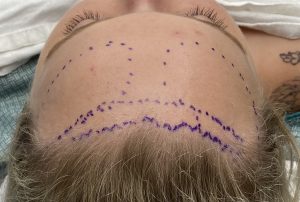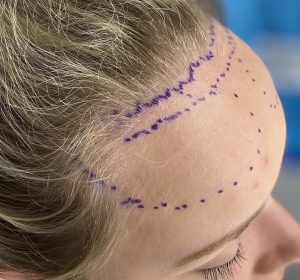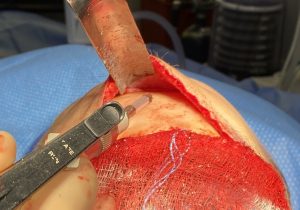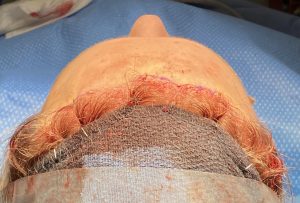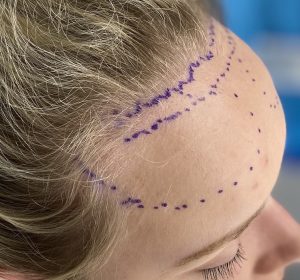Background: Since the forehead occupies 1/3 of the total face surface area it has a significant aesthetic influence on the perception of one’s appearance. While the forehead lacks any of the dynamic landmarks that make up the rest of the face (eyes, nose and mouth) one might assume that it has few aesthetic features to change. Some of the most aesthetically landmarks of the forehead are at its perimeters…the northern frontal hairline, the southern eyebrows/brow bones and the temporal line or width of the forehead at its sides…all of which can be surgically altered. Lying within these borders is the also important contour of the featureless forehead shape between them.
In reducing excessive features of the forehead the two most common concerns are frontal bossing and a vertically long forehead. Frontal bossing refers to an excessive projection or roundness of the bone which is most significant at the upper half of the forehead. It may also refer to frontal bossing’s smaller cousin…forehead horns which are more limited areas of upper forehead projections. The vertically long forehead is the result of a high or retro positioned hairline. Such a hairline often falls behind the curve of the upper forehead as it transitions onto the top of the skull. The number of 6.5cms between the eyebrows and the frontal hairline is often referred to as the upper limit of forehead length and almost anyone that feels they have a high forehead is at or exceeds this measurement.
While correction of frontal bossing/horns and the vertically long forehead are separate operations they often are done concurrently. The vertically long forehead is frequently associated with some degree of frontal bossing or excessive upper forehead convexity. Since the use of a frontal hairline incision is essential to a hairline advancement/lowering procedure for the vertically long forehead it provides convenient access to address an overly prominent bony forehead at the same time. They are also synergistic procedures in that moving the frontal hairline forward/down, even a small amount, helps make the upper forehead look less prominent.

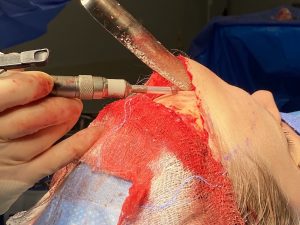
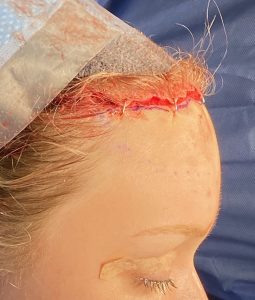
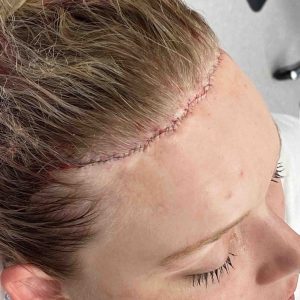
Case Highlights:
1) Forehead reduction can be for frontal bossing, shortening of a long forehead or both.
2) The frontal hairline incisions provides access to do combined bone and soft tissue forehead reductions.
3) The limits of bony forehead reduction is the thickness of the frontal bone and that of vertical forehead shortening the flexibility/stretch of the scalp.
Dr. Barry Eppley
Indianapolis, Indiana





